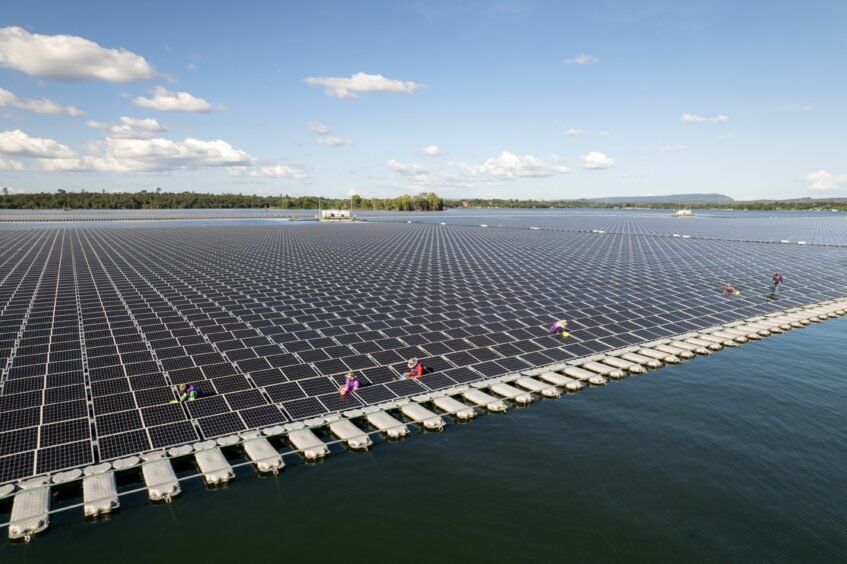
A floating solar farm that’s equivalent to about 70 soccer fields in size has begun generating power in Thailand, reflecting the country’s push to achieve carbon neutral status by 2050.
The facility in Sirindhorn reservoir, about 660 kilometers (410 miles) east of the capital city Bangkok, is the world’s largest hydro-floating solar hybrid system, which combines two methods of electricity generation, according to state-run Electricity Generating Authority of Thailand. While 145,000 solar panels harness power from the sun during the day, three turbines convert energy from flowing water at night.
The $34 million solar farm, which joined the grid on Oct. 31, is the first of 16 projects planned in key Thai reservoirs, with a combined capacity of 2.7 gigawatts. It’s part of the country’s push for more renewable energy sources to reduce its reliance on natural gas, which is currently the biggest source for electricity generation.
Thiland will reach carbon neutrality by 2050, ahead of the earlier target of 2065, Prime Minister Prayuth Chan-Ocha pledged earlier this month at the United Nations Climate Change Conference. The country has set a goal to reduce all greenhouse-gas emissions to net zero by 2065. Natural gas accounted for nearly two-thirds of Thailand’s power generation last year, while wind, solar and hydropower combined for less than 10%, according to BloombergNEF.
Recommended for you
